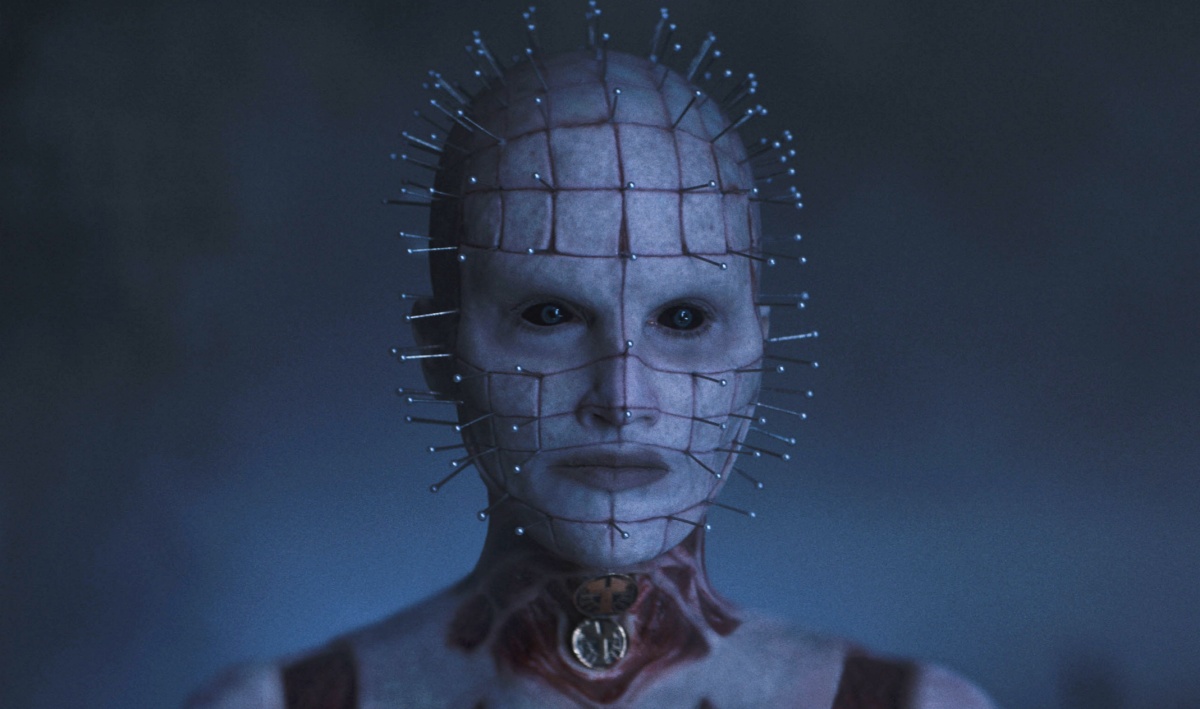Interview With ‘BMF,’ ‘Hellraiser (2022)’ Production Designer Kathrin Eder
A look behind the curtain at the world of production design.

Production Design is one of the most oft-overlooked aspects of filmmaking, but when it shines, it adds incredible layers to the stories being told. One such movie was the surprising gem of a reboot Hellraiser (2022), whose production designer, Kathrin Eder, I had the pleasure of interviewing.
Hellraiser (2022)
Hellraiser (2022) was a unique challenge for Eder, being a reboot of an iconic ’80s horror series that sought to draw from the original book to create something new. As such, they paid homage to the first Hellraiser while also playing with their new cast and locations. They also made sure to reflect a more modern lens with how they approached BDSM, addiction, and seduction.
Eder and Director David Bruckner worked for months prior to filming on the concept design phase, breaking the script down scene by scene. They sought to make the set a “reflection of a lot of egomaniacs that we are faced with in our present-day society … wealthy men in the United States who assume power and act as they please upon it because they think they’re invincible.”
All of this is displayed in the incredible Voight Mansion. Where the original movie was set in a very confined British house, the reboot has a sprawling mansion that is shown both as a lion’s den of hedonism and as a seemingly abandoned mansion.
The creation of this mansion was helped by the budget (larger than the original movie, even when accounting for inflation) and by filming both on location and in studios. Filming in Serbia allowed them to build part of the set from the ground up, affording detail and space that might not be available in the States. It still presented unique challenges; the production team had to bring in local woodworkers due to the challenges of getting luxury furniture in Serbia.
This hybrid of on-location and in-studio filming allowed them to partially build the incredible cage used in the climax, the rest being filled in with CGI. It also allowed them to create hidden tunnels throughout the mansion that reveal the “voyeurism and desire for control.”
BMF (Black Mafia Family)
For Eder, it’s especially interesting to go from movie to TV; TV shows are an incredible challenge due to allowing for less prep time but also demanding more sets. BMF season 2 had 250 locations, according to Eder’s count.
BMF also offers a different world-building challenge; instead of creating a strange world of ethereal horror, BMF is the recreation of 1980s Detriot and Atlanta, and one that must strive to accurately depict the real lives and careers of the Flenory family, especially Demetrius “Big Meech” Flenory and Terry “Southwest T” Flenory. The mother and sisters of the two brothers were actually brought in as consultants on the show.
It was in this show that Eder got to use her background in anthropology to create a visual biography of the Flenory family and their community. “Coming from anthropology, I know how crucially important it is to ask these questions in such a way that any bias is kept out of them. Especially in a sociopolitical environment that is filled with tension, sadness, anger and the desire for positive change like it was in the first half of 2020,” she wrote in an article for ADG Perspective Magainze’s November-December 2021 edition.
“You dig in with layered questions what kind of community we are looking at and then you narrow in on the family, on the character, on the socio-economic circumstance which then brings us to how the space could have looked, offset with pop culture,” she further explained in our interview. “[The main characters] were young men, they loved their music and their specific bands, certain hangout spots, certain fashion, jewelry became a big deal… It’s such a broad beautiful world, where you can access knowledge from so many different angles… and then you can start playing with color, specific patterns… certain materials like velvet or chrome and thick structured carpet.”
Even better is that her hard work has evoked a reaction from crew members who grew up in the ’80s and have a shared memory of the bygone era.
General resources
Unfortunately, there’s still a lack of publicity for this under-appreciated aspect of filmmaking. Kathrin herself hadn’t known it existed until she was already working in film. Thanks to social media, though, there are lots more resources available to people who want to learn about this not-quite-hidden art.
“The key thing to understand is production design is storytelling—and it’s most often about nonverbal storytelling,” she concluded. “Let ideas about space and human patterns wash over you … [it] include[s] so many different tools, from color palettes, architecture, sociology, psychology, anthropology, geography because at the end of the day we mirror or recreate human patterns … It’s about creating spaces that human beings change with the way they act in those spaces.”
If you’re interested in learning more, I highly suggest looking at the full video of the interview with Eder below or taking a look at the Art Director’s Guild Perspective Magazine or the Production Designers Collective—all of which are great starts to learning more about the designing of some of our favorite productions.
You can watch our full interview below:
(featured image: Disney Platform Distribution/Hulu)
Have a tip we should know? tips@themarysue.com